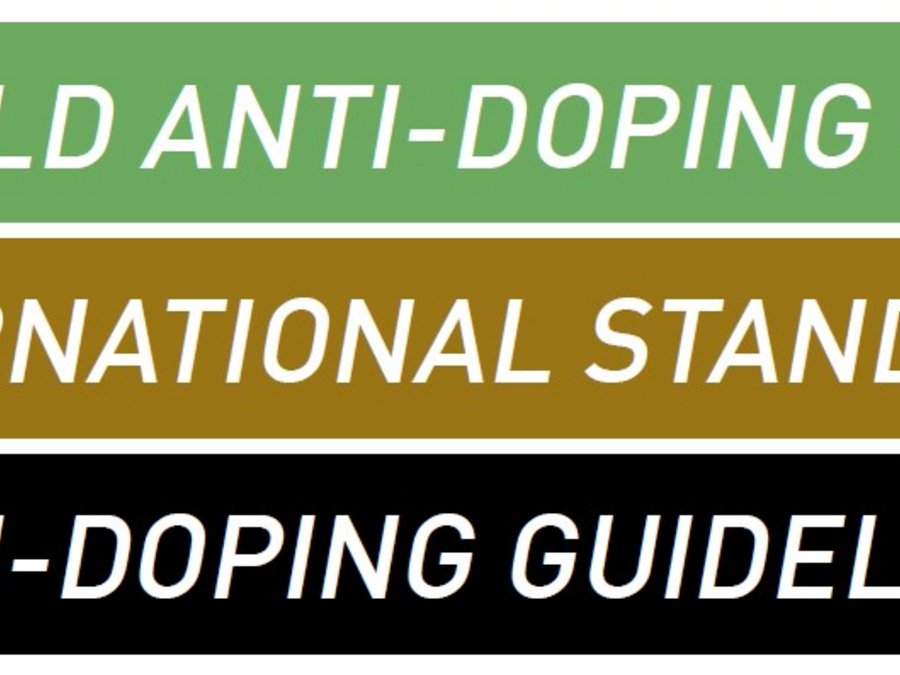![[Translate to English:] Der Welt Anti-Doping Code 2021](/fileadmin/_processed_/5/d/csm_WADC_2440x994_5109ce507f.jpg)
World Anti-Doping Code
The founding of WADA in 1999 laid the foundation for the worldwide harmonization of anti-doping regulations. Three years after WADA was established, the first draft of the World Anti-Doping Code (WADC) was presented. The potential signatories were the International Olympic Committee (IOC), the International Paralympic Committee (IPC), the International Sport Federations, and the Regional and National Anti-Doping Organizations.
What is the WADC?
The World Anti-Doping Code (WADC) is the globally valid set of anti-doping rules applicable to all sports. The WADC safeguards the right of athletes to participate in doping-free sport, protects fairness and equal opportunities in sporting competition, and serves to protect the health of athletes.
The implementation of the worldwide applicable and cross-sport WADC in the respective national anti-doping regulations represents an important milestone for fair and clean sport. Only through this implementation does the WADC become binding for the individual national sports federations and their athletes.
Development of the WADC
The founding of WADA in 1999 laid the foundation for the worldwide harmonization of anti-doping regulations. Three years after WADA was established, the first draft of the World Anti-Doping Code (WADC) was presented.
World Anti-Doping Code 2003
After several phases of consultation, the final version of the WADC was accepted by acclamation on March 5, 2003 during the 2nd World Anti-Doping Conference in Copenhagen. This was an important step in safeguarding the fundamental values of sport. The potential signatories were the International Olympic Committee (IOC), the International Paralympic Committee (IPC), the International Sport Federations, and the Regional and National Anti-Doping Organizations.
By the end of 2004 almost all international sports associations of the Olympic Movement, the National Olympic Committees and the National Anti-Doping Organizations had adopted the WADC. By signing the so-called "Copenhagen Declaration", they committed themselves to reaching an intergovernmental agreement and implementing the WADC by the start of the 2006 Winter Olympics in Turin.
World Anti-Doping Code 2009
Since organized sport and it’s doping practices and anti-doping work are constantly changing, the WADC is regularly revised and adapted to current developments. The second version of the WADC was adopted at the World Anti-Doping Conference in November 2007 in Madrid. It came into force on January 1st, 2009.
World Anti-Doping Code 2015
The next revision phase of the WADC began in 2011. The third WADC was ultimately adopted at the World Anti-Doping Conference in November 2013 in Johannesburg. The revision came into effect on January 1st, 2015.
World Anti-Doping Code 2021
The most recent revision process to date began in 2018. The new WADC 2021 came into effect on January 1st, 2021. The changes from the WADC 2015 to WADC 2021 can be tracked in a redline version on the WADA website.
Standards and Guidelines
In addition to the WADC, which represents the basic work, WADA developed the so-called "International Standards". These detailed implementation regulations for the WADC standardize individual areas relevant to practice, such as the process of doping controls, the reporting obligations of athletes or the application for therapeutic use exemptions. They are also binding for the signatories of the WADC and must be implemented accordingly.
Furthermore, WADA provides “Guidelines” as recommendations for various aspects of anti-doping work. Implementation is not mandatory, but provides anti-doping organizations with technical assistance in implementing their programmes. In addition, technical documents provide specifications for individual sub-areas of anti-doping work, for example on how to deal with clenbuterol cases or the proportion of additional analyses in certain sports.
 Enlarge Image
Enlarge ImageDie Welt Anti-Doping Agentur (WADA)
WADA aims to promote, coordinate and monitor anti-doping work in sport worldwide. For more details on WADA's history, work and mission, visit the World Anti-Doping Agency website.